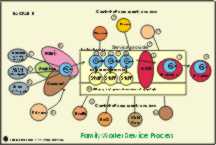| search | feedback | |
| thriving organisations |
|
| governance | |
| planning | |
| evaluation | |
| quality improvement |
|
| evidence based practice |
|
| risk management | |
| writing
policy & organisational manuals |
|
| questionnaires | |
| data analysis | |
| social capital | |
| facilitation | |
| training workshops | |
| ideas & articles | |
| about us | |
| disclaimer | copyright | |
Management |
![]()
![]()
Contents | 1.
Essence | 2.
Types | 3.
Models | 4.
Jargon | 5.
Checklists |
6. Resources
3. Planning models and examples
|
A. Strategic
| Planning models B - Human services: direct service The organisational context for a direct service plan is the vision, values and mission of the auspicing organisation. Within this context people in the community, and their needs, are the starting point and end point of the planning process. The planning process starts by identifying the needs of the people, what is to be achieved in relation to the needs, and broadly how this can be done (strategies). An action plan is developed which incorporates inputs, service processes and outputs. The service processes ultimately lead to outcomes which, ideally, meet the needs of the clients/community. To download a full size image suitable for an A4 overhead transparency - click on A4 PDF OHP Complexity in the real world The chart above is useful because it maps the elements of a project plan. It is also simplistic because it leaves out much of the real world complexity. The chart below identifies some of the complexity in a human service process.
Human
service process take place within the context of community services (A).
The client comes from a particular family, neighbourhood and community
(B) . The client has specific material circumstances (C), individual and
family characteristics (D) and issues to work on (E). Direct Service Examples Here are
six examples of direct service plans. 1.
Arabic youth
|
![]()

